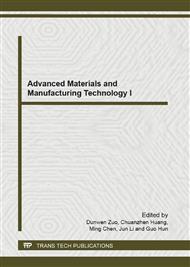p.40
p.44
p.48
p.52
p.56
p.60
p.64
p.69
p.73
Experimental Investigation on Drilling PCB Through-Holes
Abstract:
More and more attention is put on the machinability of printed circuit board (PCB) with the increasing demand of PCBs driven by the strong need of the market of the electronic products. In this paper, drill wear and burr size, as two main objects of experimental investigation, have been observed and analyzed in drilling PCB through-holes. The results of the drilling experiment conducted with normal drill and specialized drill, indicate that appropriate chisel edge thinning is in favor of decreasing flank wear of the drill, but has no apparent effect on reducing burr size for PCB through-holes drilling.
Info:
Periodical:
Pages:
56-59
Citation:
Online since:
January 2012
Authors:
Keywords:
Price:
Сopyright:
© 2012 Trans Tech Publications Ltd. All Rights Reserved
Share:
Citation:


